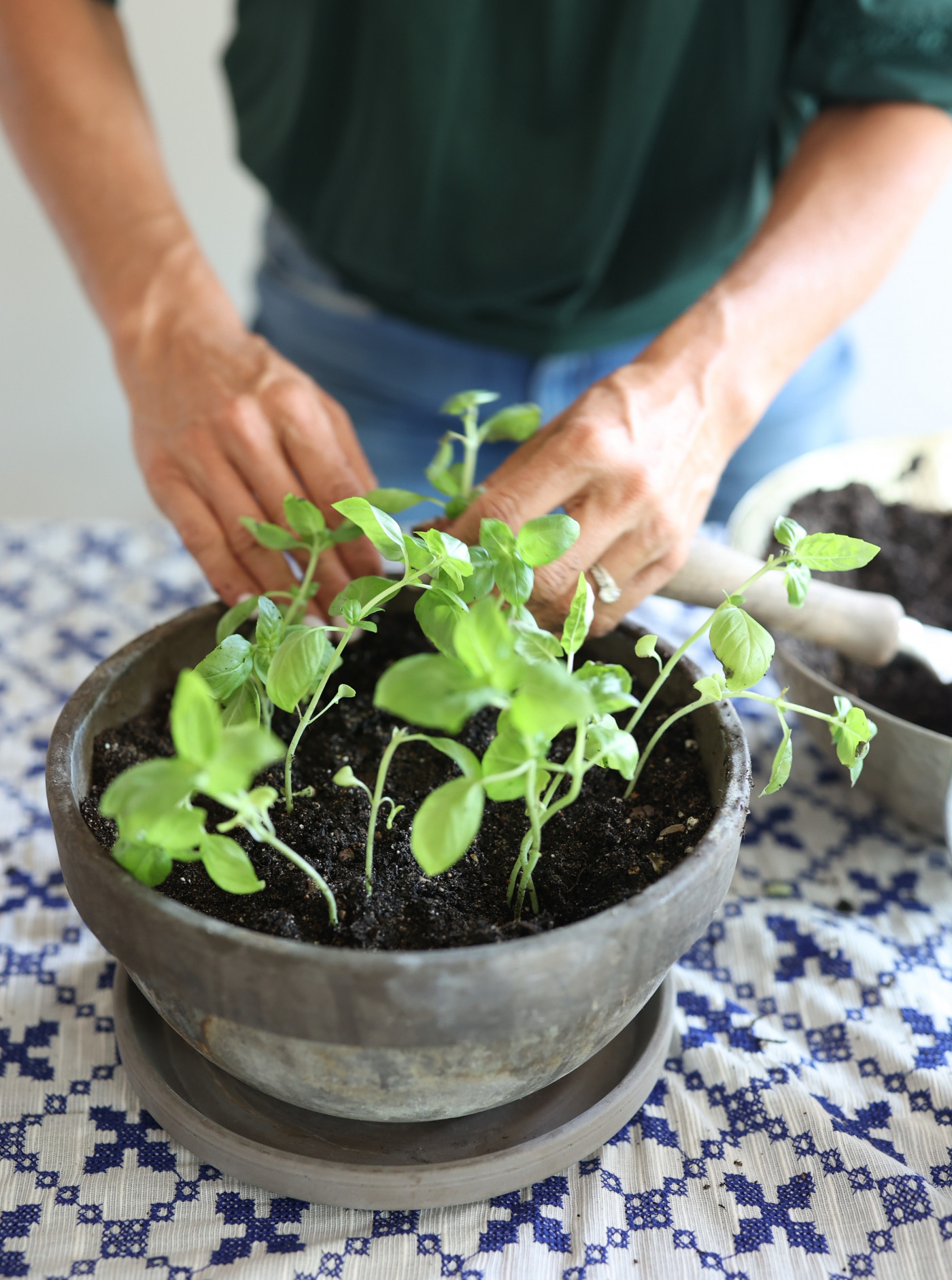Introduction: The Versatile Herb
Basil, with its vibrant green leaves and distinctive aroma, is a beloved herb in culinary traditions around the world. From Italian pasta sauces to Thai curries, basil adds a burst of flavor and freshness to a wide range of dishes. While it thrives in warm outdoor conditions, basil can also be successfully grown indoors, allowing herb enthusiasts to enjoy its bounty year-round. In this comprehensive guide, we’ll explore the steps to grow basil indoors with success, from seed to harvest.
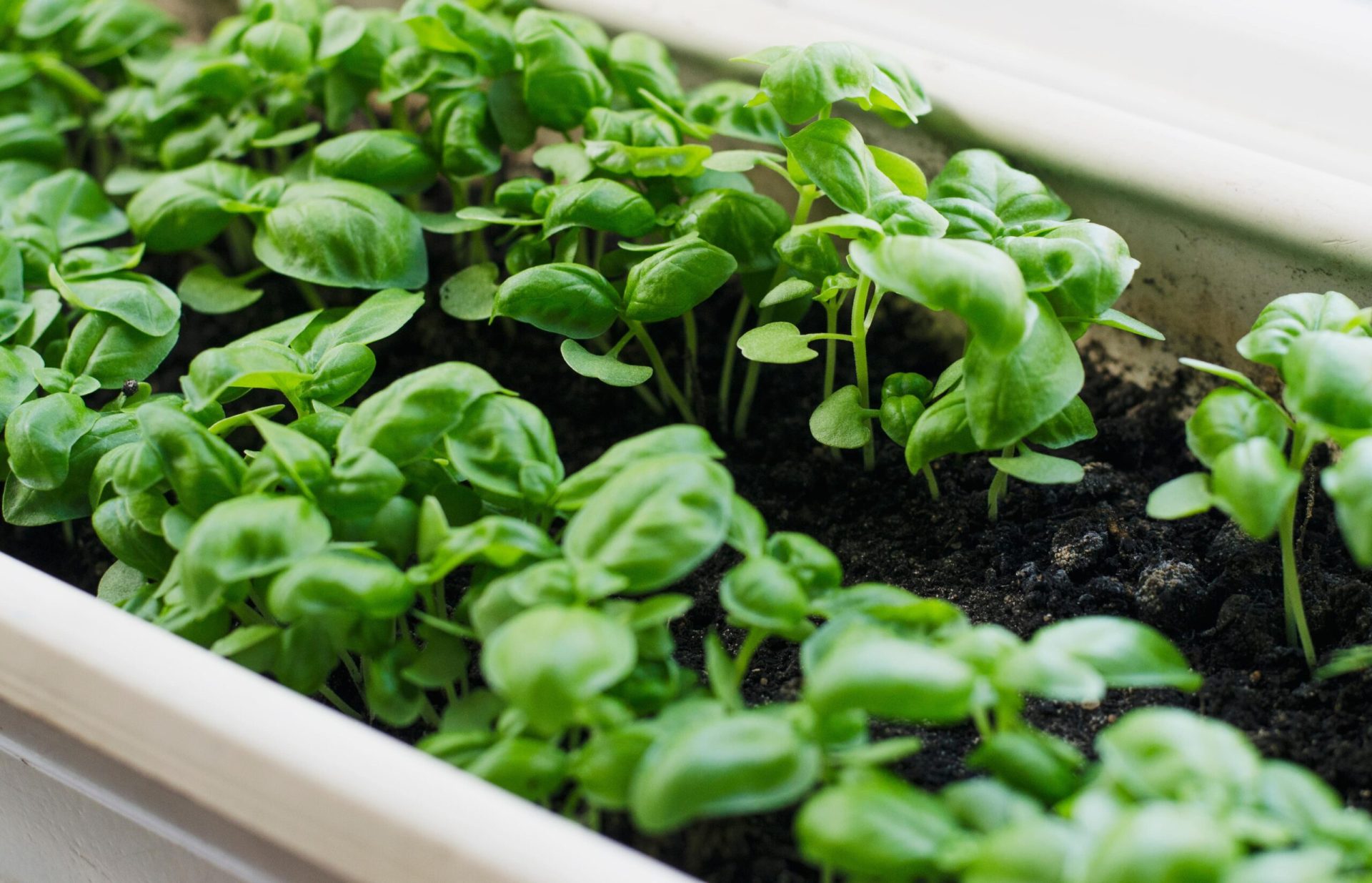
Selecting the Right Basil Variety
Before diving into the growing process, it’s essential to choose the right basil variety for your indoor garden. Common varieties include Sweet Basil, Genovese Basil, Thai Basil, and Lemon Basil, each offering its unique flavor profile and culinary uses. Consider your preferences and the dishes you plan to prepare when selecting the variety that best suits your needs.
Starting from Seed or Seedling?
One of the first decisions to make when growing basil indoors is whether to start from seed or purchase seedlings. While starting from seed offers the satisfaction of nurturing the plant from its earliest stages, it requires patience and careful attention to environmental conditions. On the other hand, purchasing seedlings provides a head start and ensures a more predictable outcome. Choose the method that aligns with your gardening goals and timeline.
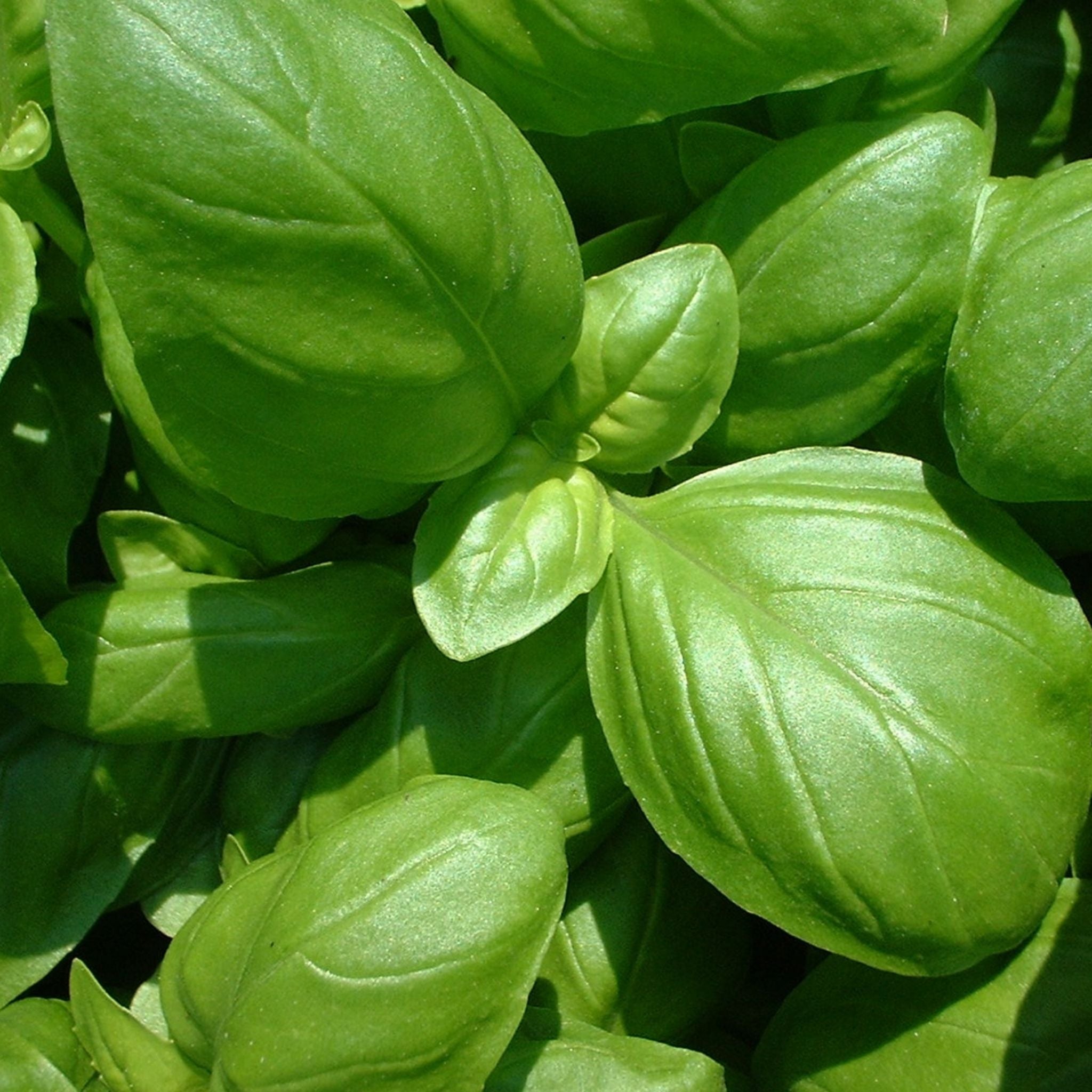
Preparing the Growing Environment
Basil thrives in warm, sunny conditions, making it well-suited for indoor cultivation. Select a location in your home that receives ample sunlight, such as a south-facing window or a spot under grow lights. Ensure that the temperature remains consistently above 70°F (21°C) to promote healthy growth. Additionally, use well-draining soil to prevent waterlogging, as basil is susceptible to root rot in soggy conditions.
Sowing Basil Seeds: A Step-by-Step Guide
If you’ve opted to start from seed, follow these steps to sow basil seeds indoors successfully:
- Fill seed trays or small pots with a quality potting mix, leaving a quarter-inch space from the top.
- Sow basil seeds evenly across the soil surface, pressing them gently into the soil.
- Mist the soil lightly with water to moisten it, ensuring that the seeds remain in place.
- Cover the trays or pots with a clear plastic lid or a plastic wrap to create a greenhouse-like environment.
- Place the containers in a warm, sunny location or under grow lights, maintaining consistent moisture levels.
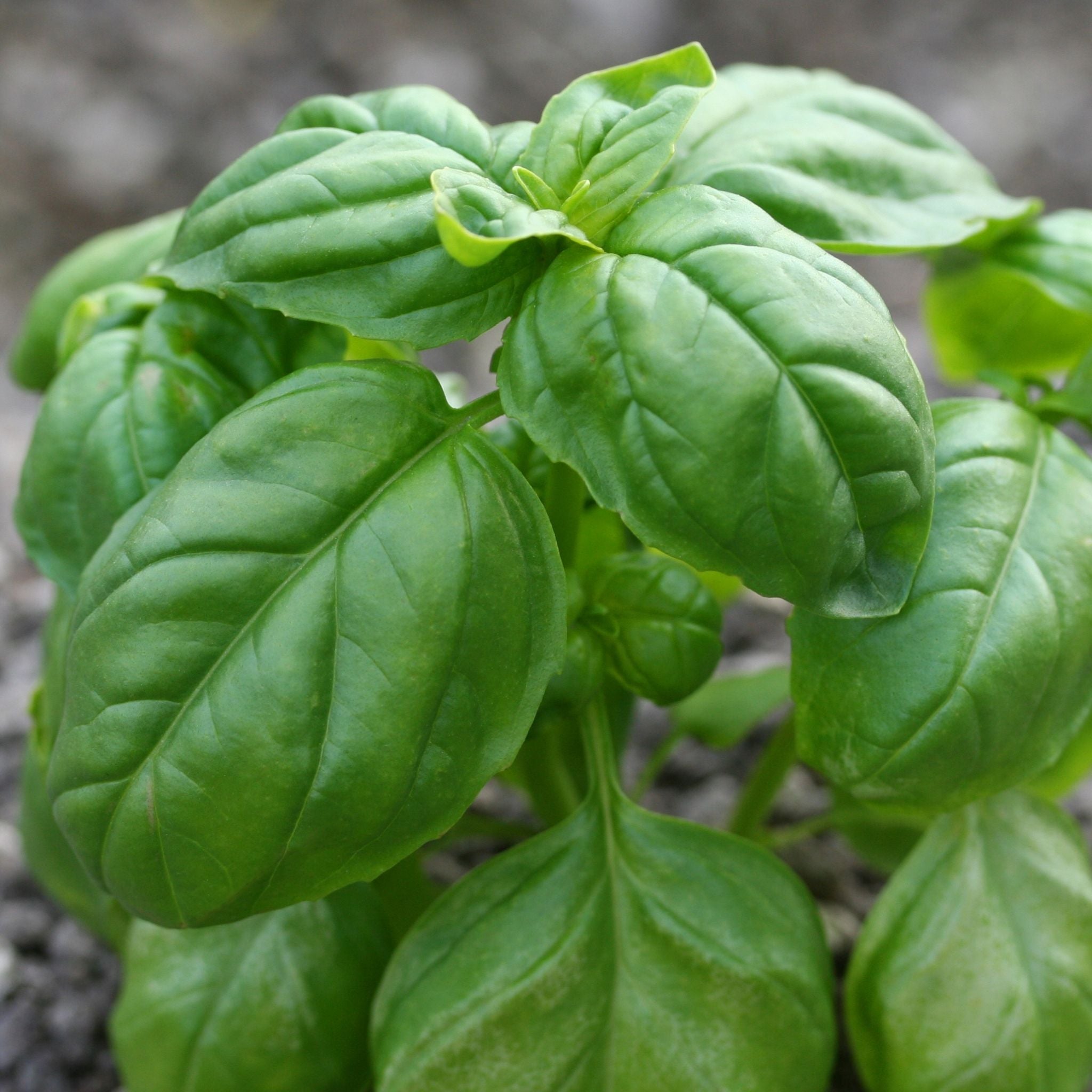
Caring for Basil Seedlings
Once the basil seeds germinate, provide them with tender loving care to support healthy growth:
- Water the seedlings regularly, keeping the soil evenly moist but not waterlogged.
- Thin out overcrowded seedlings to allow ample space for growth, leaving the strongest ones to thrive.
- Rotate the containers regularly to ensure uniform exposure to sunlight and prevent leggy growth.
- If using grow lights, adjust the height to maintain an optimal distance between the light source and the seedlings, typically 6-12 inches above the plants.
Transplanting Basil Seedlings
When the basil seedlings develop their first set of true leaves and outgrow their initial containers, it’s time to transplant them into larger pots. Follow these steps for successful transplanting:
- Prepare larger pots filled with well-draining potting mix, ensuring adequate drainage holes at the bottom.
- Gently loosen the soil around the base of each seedling, taking care not to damage the roots.
- Transplant the seedlings into the new pots at the same depth as they were previously growing, pressing the soil lightly around the base.
- Water the transplanted seedlings thoroughly to settle the soil and encourage root establishment.
- Place the pots in a sunny location or under grow lights, continuing to provide attentive care as the plants mature.
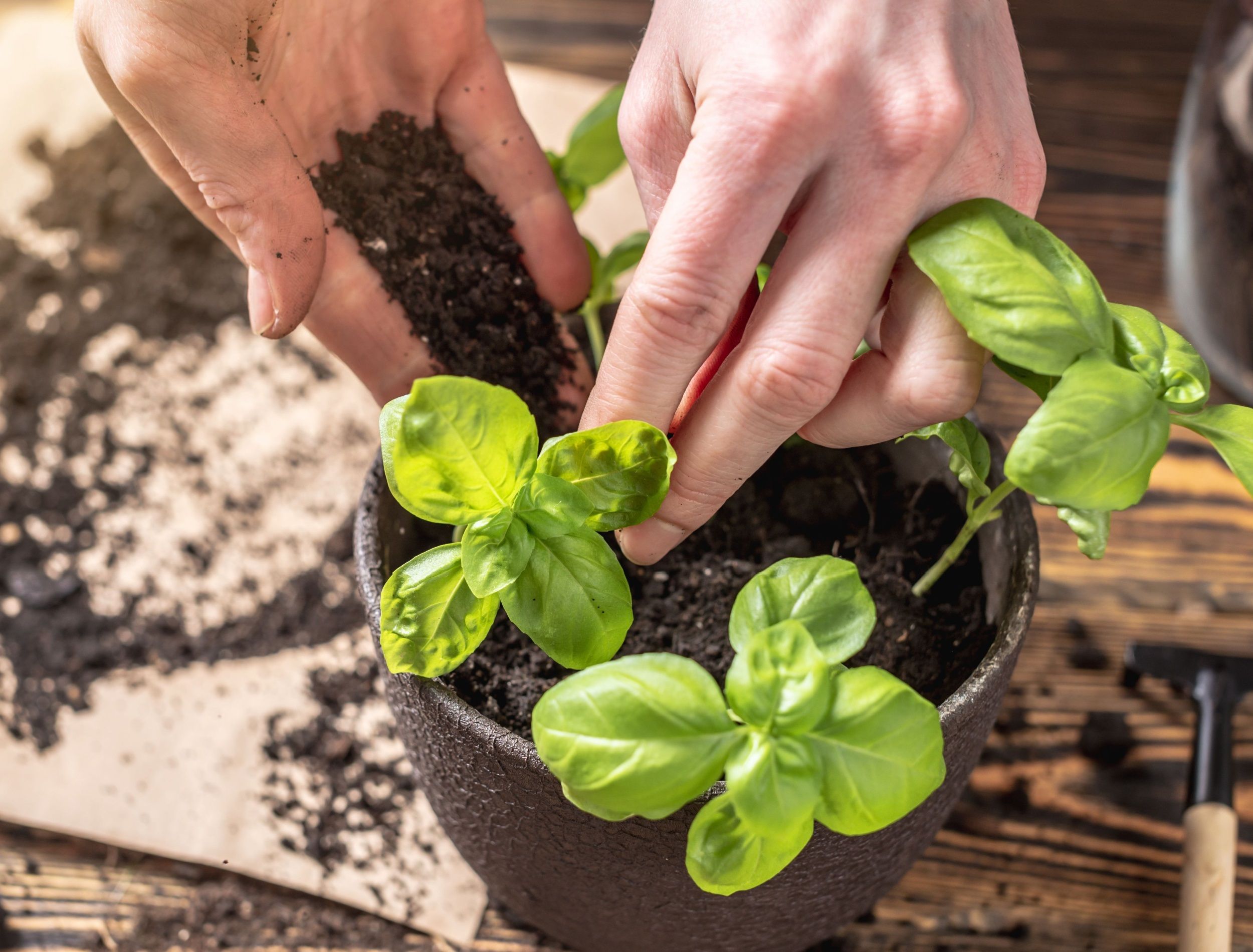
Pruning and Harvesting Basil Leaves
As your basil plants grow, they will benefit from regular pruning to encourage bushy growth and prevent flowering. Here’s how to prune and harvest basil leaves effectively:
- Pinch off the top set of leaves above a pair of lower leaves, using your fingers or clean scissors.
- Avoid pruning more than one-third of the plant at a time to prevent stress and promote continuous growth.
- Harvest basil leaves as needed for culinary use, selecting mature leaves from the top of the plant.
- Regular harvesting promotes new growth and ensures a bountiful supply of fresh basil for your culinary creations.
Pest and Disease Management
While basil is relatively resilient, it can be susceptible to pests such as aphids, whiteflies, and spider mites, as well as fungal diseases like powdery mildew. Keep an eye out for signs of infestation or disease, such as yellowing leaves, distorted growth, or powdery residue on the foliage. Promptly address any issues with organic pest control methods or fungicides labeled for edible plants to protect your basil crop.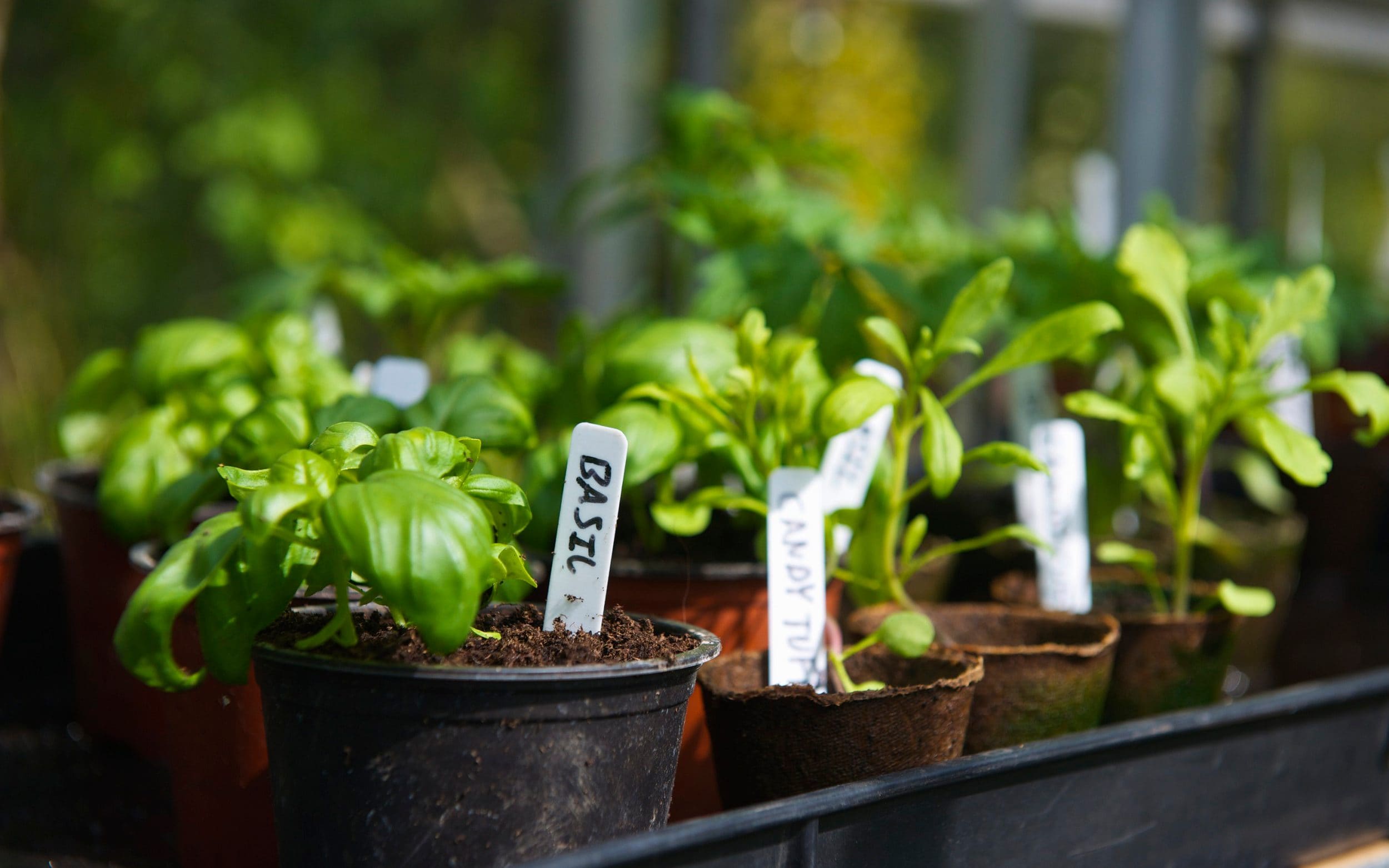
Preserving Freshness: Storing and Using Basil
Once you’ve harvested your basil leaves, it’s essential to store them properly to maintain their freshness and flavor. Here are some tips for storing and using basil:
- Refrigeration: Place freshly harvested basil leaves in a plastic bag or container lined with a paper towel to absorb excess moisture. Store them in the refrigerator’s crisper drawer, where they can stay fresh for up to a week.
- Freezing: For longer-term storage, consider freezing basil leaves. Wash and pat the leaves dry, then chop or puree them with a bit of olive oil. Transfer the mixture into ice cube trays and freeze until solid. Once frozen, transfer the basil cubes into a freezer bag or container, and use them as needed in soups, sauces, or pesto.
- Drying: Another option for preserving basil is drying. Hang bundles of freshly harvested basil upside down in a warm, well-ventilated area out of direct sunlight. Once completely dry, remove the leaves from the stems and store them in an airtight container. Dried basil is perfect for seasoning dishes like pasta sauces, soups, and stews.
- Culinary Uses: Basil’s bright, herbaceous flavor makes it a versatile ingredient in various dishes. Add fresh basil leaves to salads, sandwiches, wraps, and pizzas for a burst of freshness. Incorporate chopped basil into pasta sauces, stir-fries, and marinades to enhance the flavor profile of your dishes. And don’t forget the classic combination of basil, tomato, and mozzarella in caprese salads or bruschetta.
- Creative Recipes: Experiment with different ways to incorporate basil into your cooking. Try making homemade basil pesto by blending fresh basil leaves with garlic, pine nuts, Parmesan cheese, and olive oil. Use the pesto as a sauce for pasta, a spread for sandwiches, or a topping for grilled meats and vegetables. You can also infuse basil into syrups, vinegars, and cocktails for a unique twist on traditional recipes.
Sharing the Harvest: Community and Sustainability
Growing basil indoors not only provides you with a fresh supply of herbs but also offers opportunities for community engagement and sustainability. Consider sharing your surplus basil with friends, family, or neighbors, spreading the joy of gardening and culinary exploration. You can also explore ways to compost organic waste from your basil plants, contributing to a more sustainable food system and reducing your environmental footprint.
Conclusion: Enjoying the Fruits of Your Labor
In conclusion, growing basil indoors is a rewarding endeavor that allows herb enthusiasts to savor the flavors of this versatile herb year-round. By selecting the right variety, providing optimal growing conditions, starting from seed or seedlings, and offering attentive care throughout the growing process, you can cultivate thriving basil plants in your home. From seed to harvest, the journey of growing basil indoors is filled with learning opportunities and culinary delights, ensuring a plentiful supply of fresh, aromatic basil leaves for your favorite dishes.
